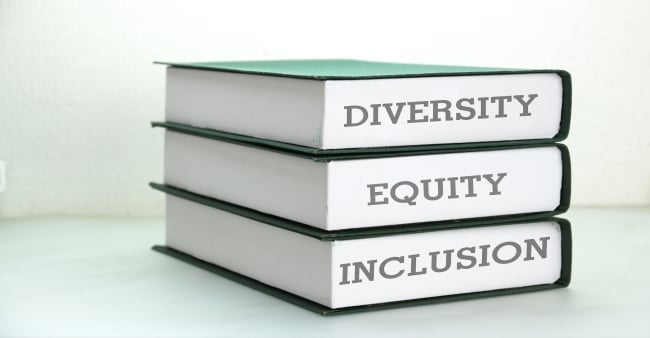You have /5 articles left.
Sign up for a free account or log in.

studio2013/iStock/Getty Images Plus
As significant strides are made in formalizing diversity, equity and inclusion efforts within higher education institutions, we must be careful not to abuse DEI language in ways that work against our aims. DEI is deeply vulnerable to grifters and even to incidental damage by do-gooders who are genuinely committed to DEI principles yet uncritical in their implementation.
Consequently, those seriously committed to the goals of DEI should be wary of the following uses (and abuses) of the language and principles of DEI, which can undermine DEI’s very purposes. We should seek to avoid using DEI:
1. As a euphemism, to avoid navigating the discomfort of talking about race. Examples include “the DEI candidate” or “the DEI initiative.” The discomfort around talking about race is there for a reason: to remind us to be sensitive and thoughtful when and if we decide to talk about it. Saying “DEI” as a shorthand for race, or for “person/people of color,” is dismissive, and it is also a way of avoiding the awkwardness and embarrassment of talking about race—awkwardness and embarrassment that are emotive signals that we might be out of line.
2. As a smoke screen for efforts to prioritize our own preferences and desires. One such example is using DEI as a justification for pushing forward a policy or action that benefits you, especially when you are not a member of any of the marginalized communities that DEI initiatives support.
3. As an excuse to avoid doing more—e.g., “we hired a new director of DEI initiatives, so now DEI efforts are their responsibility,” or “I’m an oppressed person, so I cannot possibly be oppressive,” or else “I am a supporter of DEI, so I must understand it fully” (the latter carries the implicit assumption I do not need to do any further introspection on my own investments in such systems as heteropatriarchy and/or white supremacy). Another example might include using DEI as a reason to dismiss voices from marginalized communities because their words or work do not center social justice in a way that is legible to you.
4. As reification of the very practices DEI is intended to upend—for instance, by hiring an Asian man or Latino and treating the inclusiveness of that hire as proof that a community need not further examine its hiring practices for latent forms of discrimination. In this case, a reification would obstruct efforts to examine why and how all the Asian women and Latinas who applied to the position were deemed not quite the right “fit.”
5. As a stand-in for race, or for a particular race. Up until now my examples have cast DEI primarily in terms of race, but this casting ultimately relies on an uncomplicated view of DEI. It ignores the ways that such identity categories as queerness, gender, disability, etc. and their intersections are all supported by and indeed central to efforts to advance diversity, equity and inclusion. If you champion DEI as a stand-in for race, and in doing so drown out the voices of other marginalized people, you compromise even the goal of racial justice.
6. As a binary. Up until now my examples have included another assumption: that either DEI is for you or it is not; either it pertains to your group or it does not. This misuse denies intersectional forms of marginalization and power and assumes that marginalized people cannot also be oppressive.
7. As uncontested terrain, as if the word “equity” does not concede ground to those afraid of equality, and as if it is self-evident that everyone would want to seek “inclusion” in otherwise exclusive institutions and practices. This form of misuse also includes treating “diversity” as if it is static rather than malleable, and doing so denies the possibility of progress in DEI goals.
8. As a fetish or accessory. Fetishizing DEI often takes the form of fetishizing marginalized identities, or especially a particular group of marginalized people. Examples include people with power being overly eager about DEI initiatives, or else casting themselves as saviors of marginalized people by championing DEI even if it means talking over marginalized people who do not fit their vision of what marginalized people should be like. This approach denies the humanity of marginalized people by positioning them as subjects, or indeed as background, to an empowered person’s quest for self-actualization.
9. As a springboard for your own pursuit of power. This use shares much with the fetish use but can be done even without fetishizing marginalized communities or taking them along as an accessory. It is at play whenever supporting DEI principles means that marginalized people are supporting you, instead of you supporting them.
10. As a means of control. This use has much in common with the springboard use and consists of the adoption of a DEI stance as a means of establishing oneself as a necessary midwife to diversification efforts. It entails positioning oneself as middleman or interlocutor for DEI issues, when in fact marginalized people can speak for themselves.




